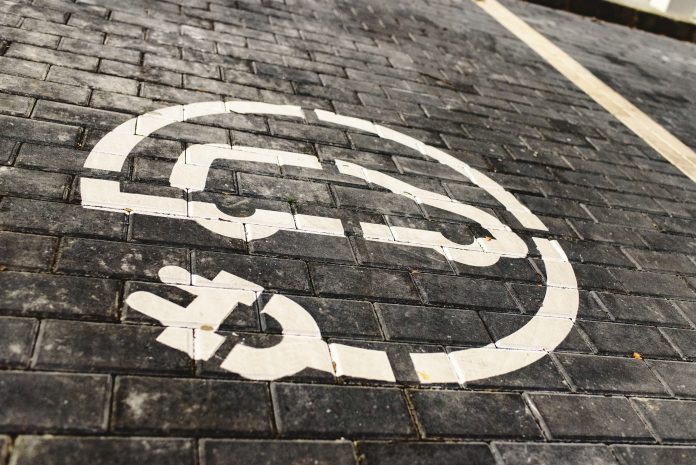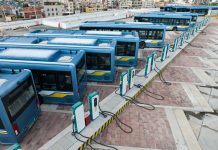Here, Peter O’Driscoll, Managing Director at RingGo, discusses the future of the mobility industry, with a focus on the continued decline of diesel and the expansion of EV charging points across the country
Throughout 2019, the parking and mobility industry has had to embrace and adjust to a number of new factors, many of which also impact local governments and how they manage mobility in their area.
The rise of new ride hailing services to compete with Uber, electric vehicles, and the decline of diesel will cause 2020 to be another year of change. Shifting consumer behaviours will give providers the opportunity to either adapt accordingly or widen their scope of digital solutions as they partner with local governments to make mobility simpler for citizens.
The diesel decline – becoming more environmentally conscious
As the parking industry moves towards more intuitive solutions for drivers, the automotive industry is also having to accommodate changing driver behaviours, especially when it comes to considerations around their environmental footprint. Traditionally, diesel and petrol cars have dominated the road and have both contributed to health and environmental risks. However, being “environmentally aware” has led to the decline in the uptake of diesel cars – a decline that is projected to continue – with an expectation of a 15-20% reduction in the amount of diesel cars in London in 2020.
The last couple of years have also seen a number of restrictions put in place by local authorities, such as congestion charges, Emissions Based Parking, and the ULEZ scheme, to discourage the purchase of diesel cars. In addition, London is also seeing another mobility trend – fewer cars entering the city altogether. More people are not just turning from diesel to petrol cars, they are also moving to mobility services such as Free Now, Kapten, Uber, and Bolt. This is driven primarily by Gen Z and Millennials who no longer believe that car ownership is necessary and would rather use ride hailing and car sharing solutions.
The decline in car ownership and popularity of ride hailing then has a knock-on effect when it comes to public transport. Public transport providers, like TfL, will have to start thinking about their price points, rethink their business model and understand the areas in which the business can continue to grow versus the areas where the focus will need to shift.
This shift in mobility preference also pushes the parking and mobility industry to refocus on new revenue streams, including logistics and the fleet industry to augment the change in consumer habits. Consumers are always searching for the easiest and quickest way to get from point-A to point-B with the least amount of hassle. This has also created a space for other forms of transport, such as electric scooters, to become a common choice for many within cities, and is expected to be another key growth element within the mobility matrix in 2020 and beyond.
Expansion in the roll-out of EV charge points
The conversation around air pollution and the risks it has for citizens is a continuous key point on the agenda for local authorities. In the last year, electric vehicle (EV) purchases have become a major contender with standard petrol or diesel cars, with EVs currently representing 1.6% of all vehicles on the road in the UK.
As the automotive industry strives to become more environmentally friendly, cities such as London will see a big driving push for the uptake of EVs in 2020 and 2021. As EV popularity increases, representation of EVs on UK roads will rise to 2% next year and will continue to rise to a high of 25% within the coming years.
However, the rate at which the mobility and automotive industry will be able to meet expectations across the country is highly impacted by local authorities. As local authorities maintain ownership of sidewalks and highways, mobility providers and manufacturers will in turn depend on them to provide the infrastructure, i.e. charging points, to support EV adoption. This includes disrupting current travel to dig holes and add high voltage systems.
Bearing this in mind, mobility and parking providers need to ensure that their solution is prepared for this change by being able to map charging points or combine parking and charging payments. Having this capability built into the solution will also enable vendors to support local authorities – a partnership that is crucial for success of both parties – with data about charging point popularity and advice on where and what kind of additional infrastructure should be installed.
Building local authority relationships
Local authorities are always planning for the future, which includes having a clear understanding of current consumer behaviour – who is coming in and out of cities, the types of cars being used, how this is impacting wellbeing and the environment, etc. Planning is also being driven by government mandates that are becoming increasingly stringent. In turn, the last year has seen the parking and mobility industry transition from simply offering traditional mobility solutions to data driven integrated services.
An example is the adoption of Light Detection and Ranging (LIDAR) mapping technology, enabling technology that scans streets and collects information on the flow of traffic and utilisation of parking spaces. Using AI, it can build up a picture of how mobile cities are and how much parking inventory is being used. This provides a detailed representation of mobility patterns and can even predict how they might change and evolve in the future.
Gathering this type of data to understand drive behaviour across the country will not only benefit local authorities for future planning, but it is the kind of technology that will differentiate the successful mobility vendors from those that lack the necessary capabilities, and therefore start to fail. This new demand for data will likely cause 2020 to be the first of many years where we see providers, who have traditionally been competitors, form partnerships or invest in joint ventures to remain relevant.
Those providers that have jumped on this data driven trend are able to ensure that solutions are being developed to meet consumer and societal needs, as well as cater to local authorities that are expecting digital solutions rather than simple transactional tools. By focusing on developing and utilising data driven solutions, local authorities and providers will be able to understand key concerns such as congestion rates and parking pain points in more depth, and build their mobility strategy for the next 20 years based on data.
2020 shows signs of great promise for the mobility and parking industry, giving providers a wide scope of opportunities to take advantage of. However, the caveat lies in whether providers are able to adapt and adopt new business models quickly in order to meet consumer demands, which are continuing to speed up. Additionally, those that can work with local and central government stand the best chance of succeeding and growing in the space.
The next year will be a great step forward for digital transformation within the industry, and a major stepping stone towards the seamless mobility solutions of the future.











